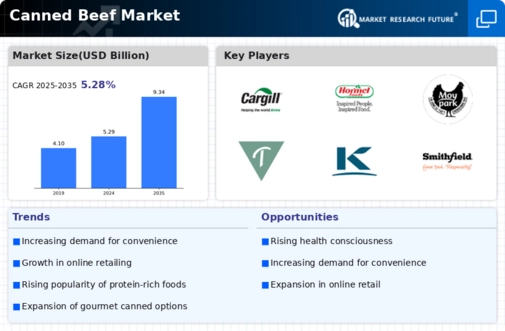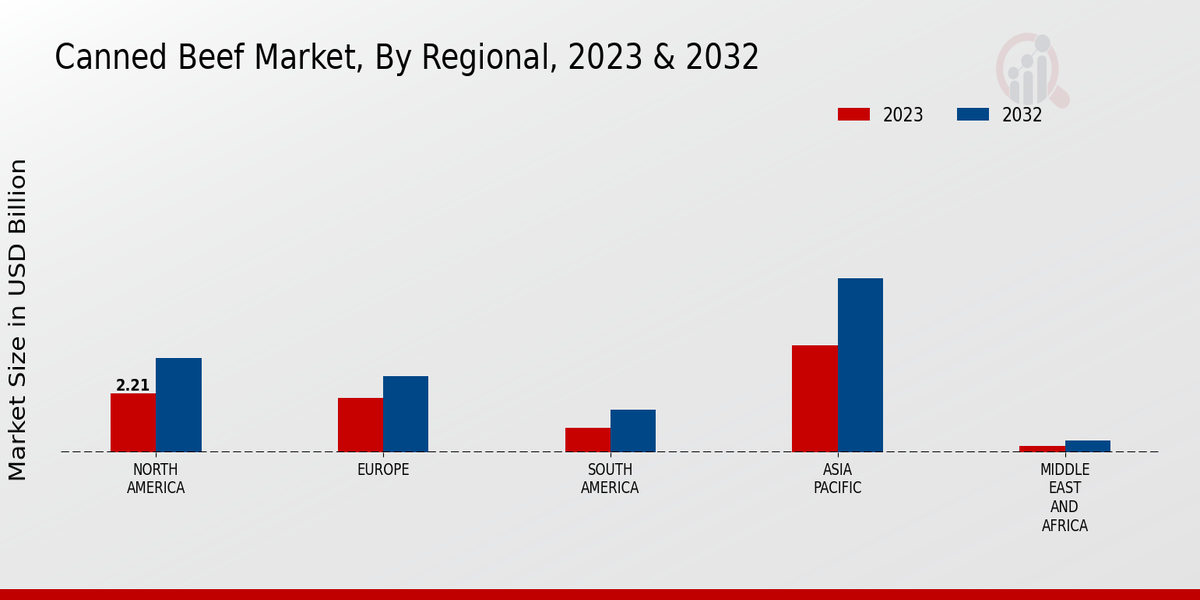Global Supply Chain Innovations
The Global Canned Beef Market Industry is experiencing innovations in supply chain management, which enhance efficiency and reduce costs. Improved logistics and distribution networks facilitate the timely delivery of canned beef products to various markets, ensuring freshness and quality. Additionally, advancements in packaging technology contribute to better preservation and reduced waste. These innovations are crucial in maintaining competitive pricing and meeting consumer demand in a dynamic market environment. As the industry adapts to these changes, it is poised for sustained growth, supporting the overall expansion of the market.
Rising Demand for Convenience Foods
The Global Canned Beef Market Industry experiences a notable surge in demand for convenience foods, driven by changing consumer lifestyles. As urbanization continues to rise, individuals seek quick meal solutions that require minimal preparation time. Canned beef, with its long shelf life and ease of use, aligns perfectly with this trend. In 2024, the market is projected to reach 5.29 USD Billion, reflecting a growing preference for ready-to-eat products. This shift towards convenience is likely to propel the market further, as consumers prioritize efficiency without compromising on taste or nutrition.
Increased Shelf Life and Food Safety
The Global Canned Beef Market Industry benefits from advancements in food preservation techniques, which enhance the shelf life and safety of canned products. Canned beef can be stored for extended periods without refrigeration, making it an appealing option for consumers in regions with limited access to fresh meat. This aspect is particularly crucial in developing countries, where food security remains a challenge. As the market evolves, the emphasis on food safety regulations and quality assurance measures is likely to bolster consumer confidence, thereby driving sales and contributing to the projected growth of the market.
Growth in E-commerce and Online Retail
The Global Canned Beef Market Industry is witnessing a transformation due to the rapid expansion of e-commerce and online retail platforms. Consumers increasingly prefer the convenience of purchasing canned beef online, which offers a wider variety of products and competitive pricing. This trend is particularly pronounced among younger demographics who are more tech-savvy and value convenience. As a result, the market is expected to grow significantly, with projections indicating a rise to 9.34 USD Billion by 2035. The integration of digital marketing strategies by manufacturers further enhances visibility and accessibility, potentially increasing market penetration.
Health Consciousness and Nutritional Awareness
The Global Canned Beef Market Industry is influenced by a growing awareness of health and nutrition among consumers. As individuals become more health-conscious, they seek protein-rich foods that align with their dietary preferences. Canned beef, being a source of high-quality protein, appeals to this demographic. Furthermore, the industry is adapting to these trends by offering low-sodium and organic options, catering to diverse consumer needs. This shift towards healthier eating habits is likely to sustain the market's growth trajectory, with a projected CAGR of 5.3% from 2025 to 2035, reflecting the industry's responsiveness to evolving consumer preferences.



















